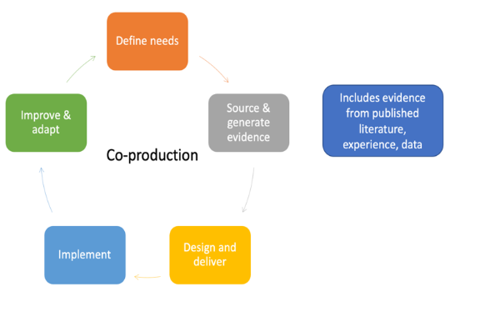How to use this competency framework
Welcome to the decision support competency framework!
This framework will help you to acquire and evidence the knowledge and skills required by:
- Decision support system (DSS) users – i.e. health and social care staff who use decision support tools created by the Right Decisions Platform or by external providers.
-
- Decision support system (DSS) providers – i.e. health and social care staff responsible for designing, developing and facilitating implementation and spread of decision support tools, as set out below in the Knowledge into Action cycle.
The framework is relevant to the Right Decision Service and also to other decision support systems.
In the first instance, we have published the generic competencies for decision support system users. The other competencies will follow.
Specialist programming and coding skills are out of scope for this framework.
The framework is based on an extensive analysis of research evidence and current educational practice, and on advice from experts in knowledge mobilisation and decision support.
How should I use this framework?
We encourage you to use the framework to:
- Identify the competencies most relevant to your needs. Your needs are likely to change over time, so you may start by focusing on a few specific competencies and then move on to others as your confidence and involvement in decision support grow
- Identify learning opportunities that will support development of these competencies.
-
- Record evidence that you meet these competencies.
Levels of learning
This competency framework uses Bloom’s Taxonomy - a widely established educational classification system - to map all competencies to six levels of learning:
1. Remember
2. Understand
3. Apply
4. Analyse
5. Evaluate
6. Create
Levels 1-3 are the basic levels, and 4-6 represent more advanced learning.
How should I use this framework?
Generic competencies
All decision support system users should aim to demonstrate the 21 generic competencies at the basic levels 1-3 in Bloom’s Taxonomy.
All decision support system providers should aim to demonstrate the 28 generic competencies at the advanced levels 4-6 in Bloom’s Taxonomy.
They are grouped into five sections:
- Key concepts
- Other core technical concepts
- Ethical use of DSS
- Soft skills
- Quality assurance and safety.
You may want to discuss with your educational supervisor or line manager which of these competencies to prioritise in the first instance to best support your role in decision support.
Knowledge into Action (K2A) competencies
These competencies are relevant only to decision support system providers. They are at the higher end of Bloom's Taxonomy (levels 4-6)
They reflect the five stages in the Knowledge into Action Cycle defined by NHS Education for Scotland and Healthcare Improvement Scotland:

1. Define user needs
2. Source and generate evidence
3. Design and deliver
4. Implement
5. Improve and adapt
You should select the Knowledge into Action competencies most relevant to your decision support role.
For example:
- As a knowledge manager you may have a focus on sourcing and generating evidence and on facilitating implementation.
- A data scientist may be more focused on sourcing and generating evidence from data and on aspects of design and delivery.
- A project manager may focus most on the implementation competencies and an improvement adviser on the ‘implement’ and ‘improve and adapt’ sections.
